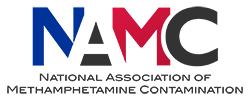Current Research
Overview of Current Practices in the Methamphetamine Testing and Decontamination Industry: An Australian Case Study
The online search identified 100 companies involved in methamphetamine remediation in Australia. This included 64 individual business websites and 36 franchise contacts. Of the 64 websites, 14 shared ownership with another business, and of the 36 franchises, 10 franchises owned other locations. There was also one business that no longer existed. Thus, there were 75…
Read MoreHousehold Contamination with Methamphetamine: Knowledge and Uncertainties
Emma J. Kuhn, G. Stewart Walker, Harriet Whiley, Jackie Wright and Kirstin E. Ross ABSTRACT Contamination of residential homes with methamphetamine is an emerging issue of significant concern to public health. Cooking or smoking methamphetamine in a residential property contaminates the house, furnishings and personal possessions within it, with subsequent exposure through ingestion, dermal absorption…
Read MoreMethamphetamine Contamination in Homes – Contamination and Risk Levels
Jackie Wright ABSTRACT Methamphetamine contamination has the potential to be present in residential and commercial buildings as a result of illicit manufacture and drug use, in particular smoking. The illicit manufacture of methamphetamine and the smoking of methamphetamine results in the generation and deposition of drug aerosols/residues on all surfaces, porous and non-porous. These drug…
Read MoreExposures associated with clandestine methamphetamine drug laboratories in Australia
Jackie Wright, John Edwards and Stewart Walker ABSTRACT The clandestine manufacture of methamphetamine in residential homes may represent significant hazards and exposures not only to those involved in the manufacture of the drugs but also to others living in the home (including children), neighbours and first responders to the premises. These hazards are associated with…
Read MoreCurrent practices underestimate environmental exposures to methamphetamine: inhalation exposures are important
Jackie Wright, Bob Symons, Jonathon Angell, Kirstin E. Ross, Stewart Walker ABSTRACT Current practice for determining the exposure to methamphetamine in contaminated homes relies on the analysis of surface wipe sample to address direct contact exposures. The movement of methamphetamine into the air phase, and the potential for inhalation exposures to occur within residential homes…
Read MoreContamination of Homes with Methamphetamine: Is Wipe Sampling Adequate to Determine Risk?
Jackie Wright ABSTRACT Contamination of domestic dwellings from methamphetamine cooking or smoking is an increasing public health problem in many countries. To evaluate the extent of contamination, sampling generally focusses on the collection of surface wipe samples from walls and other surfaces of a potentially contaminated home. Here, we report the contamination levels of many…
Read MoreAdverse Health Effects Associated with Living in a Former Methamphetamine Drug Laboratory — Victoria, Australia, 2015
Jackie Wright ABSTRACT The manufacture of methamphetamine in clandestine drug laboratories occurs in various locations, including residential houses and apartments. Unlike the controlled manufacture of chemicals and drugs, clandestine manufacture results in the uncontrolled storage, use, generation, and disposal of a wide range of chemicals and the deposit of methamphetamine drug residues on indoor surfaces…
Read MoreEnvironmental Methamphetamine Exposures & Health Effects in 25 Case Studies
Jackie Wright ABSTRACT The clandestine manufacture and use of methamphetamine can result in contamination of residential properties. It is understood that this contamination remains in homes for a significant period, however there are a lack of data available to understand the health effects of exposureto environmental methamphetamine contamination (third-hand exposure). Our study collected information from…
Read MoreExposure and Risk Associated with Clandestine Amphetamine-Type Stimulant Drug Laboratories
Jackie Wright SUMMARY Illicit drugs such as amphetamine-type stimulants, and more specifically methamphetamine, are manufactured in Australia within clandestine laboratories that range from crude, makeshift operations using simple processes to sophisticated operations. The manufacture of methamphetamine if commonly undertaken in residential homes located in urban and rural areas and is known to be associated with…
Read More


